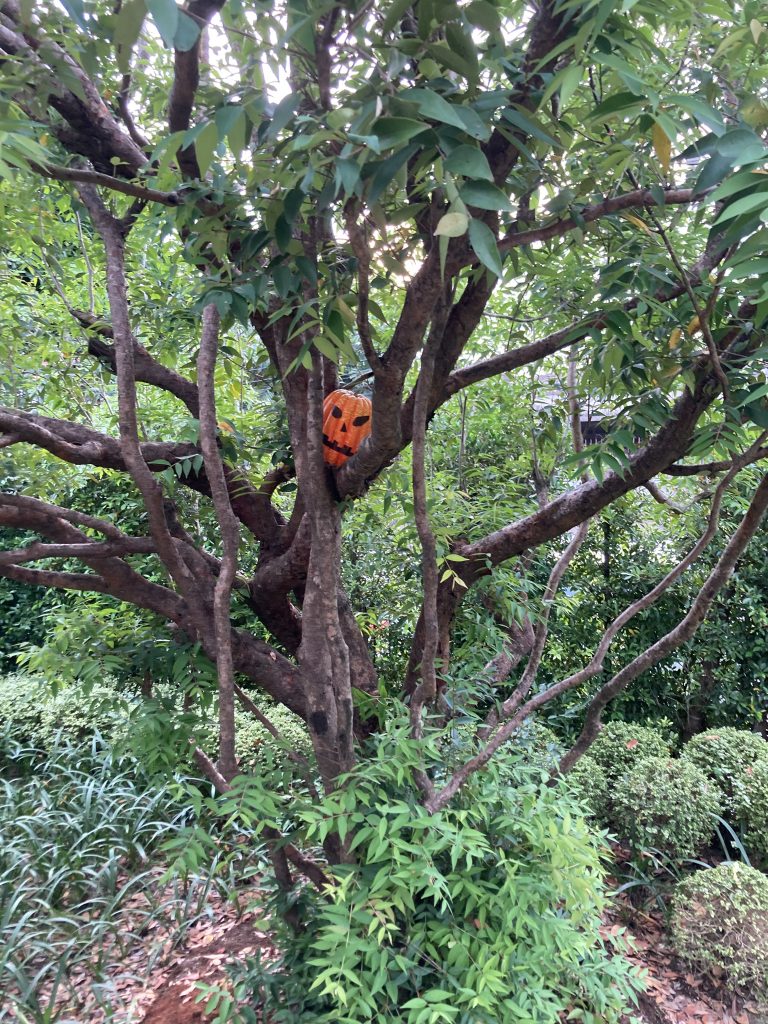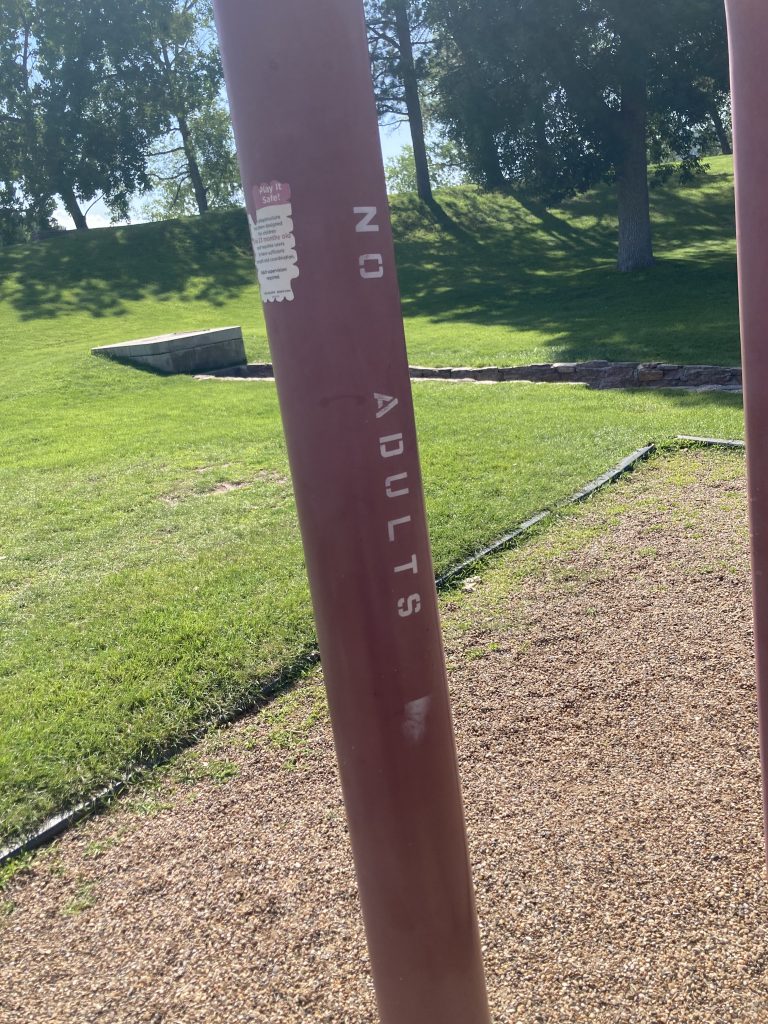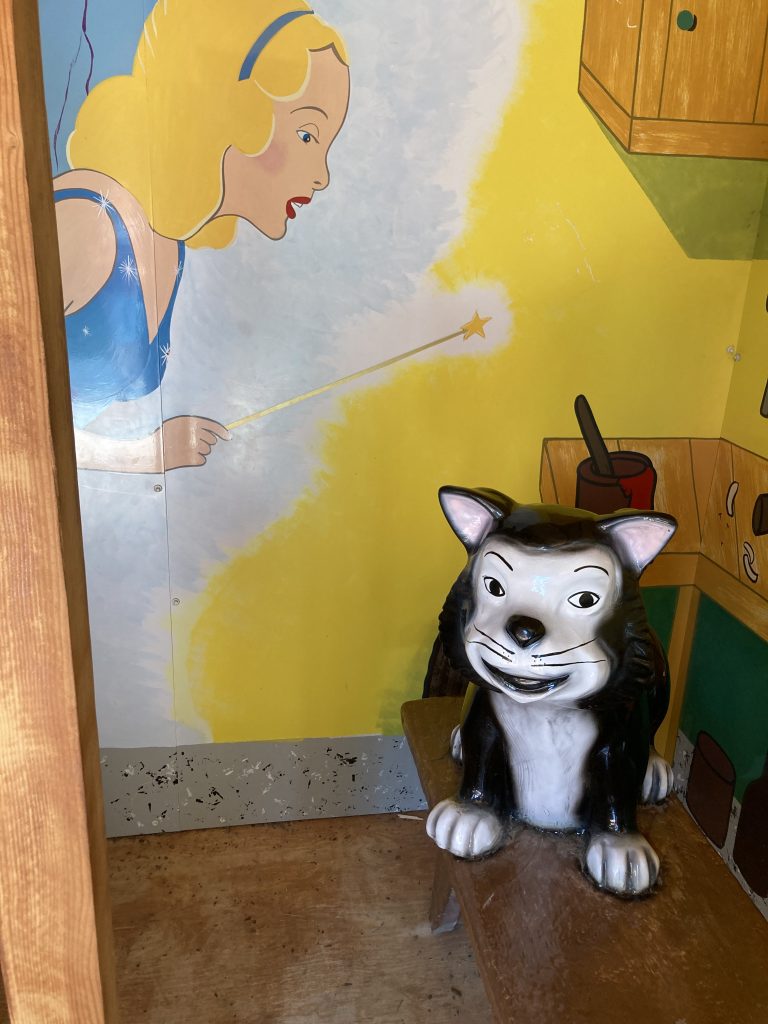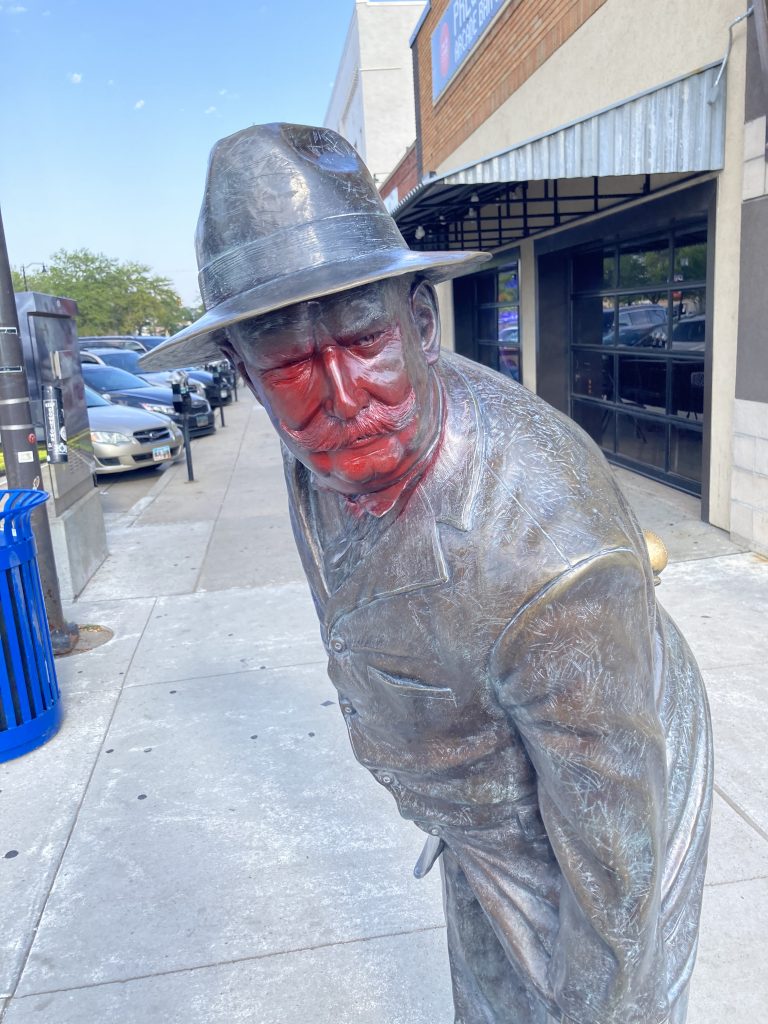pumpkin patch


‘A stretch of interstate might appear familiar for several reasons, the foremost being that, taken mile by mile, much of it looks the same. Far down on the list of reasons déjà vu might occur on the road is an accidental diversion to the site of ‘DARPA’s Abandoned Dream Stages’ from back when the agency was orchestrating and broadcasting dreams to the country’s citizens. Don’t worry: they’ve stopped doing that and they’ve hauled away most of the equipment. It’s just the dream stages, made nightmarish by time and decay and slivers of memory and bad intentions.’
It seems unlikely that anyone might accidentally arrive at the ‘Abandoned Dream Stages.’ They are ‘off the interstate’ in the way that anything technically is, which is to say that you have to drive about 45 minutes on increasingly questionable pavement to reach the edge of the site. That said, the edge of the site is hotly debated. Some people believe they’ve seen the road in their dreams. Some people say the same thing about the dense forest that surrounds it.
Most people have dreamt of the brown brick house so I pull up outside and step out of the camper to take it in. Seeing it in pictures hadn’t sparked anything and it’s as much a stranger in person. The next stop, further into the site, is a bridge where people dream of falling but I’ve been driving all day and decide to stretch my legs.
The door to the house is locked. The knob turns but someone has installed two beams on the door and frame to padlock together. The beams are strained and splintering, as though someone has failed to shoulder their way through. I try myself, half-heartedly, and with less than a quarter of a heart I check under the mat and, there, find the key to the lock, shining as though it were made yesterday.
The threat of government retribution is enough to make me cast about for cameras or for soldiers hiding in the shadows. When nothing stands out, I’m left to assume that the lock is for liability’s sake. Opening it is the equivalent of signing a waiver, in case I should experience bodily harm inside this aging building. I push open the door and then…
I have dreamed of the inside. The hallways. The rooms. I’ve more than dreamt of the brown brick house- this is my family home, the base of all my memories before this trip. It’s all as I remember it. A cracked pleather sofa. Gouged linoleum in the kitchen. The shadow of a smoke detector on the ceiling. Vague enough to be the home of anybody in a dream, only, I don’t have any memories of any other house. So, this has to be the one.
I walk up the stairs. I turn right down the hall. In my dreams, the house blurs the nearer I get to my room and the same thing happens now. The house is made that way. It’s painted and shaped to blur and the effect is so disorienting I have to reach out and touch the wall where the door should be but where, instead, is a swirl of wood and paint.
I stalk back out to the camper and return with the axe. The wall comes down easily- there is a door there, after all, hidden in the chaotic blurring. The door opens on a series of narrow passages that make up the space between the walls of the brown brick house, the sinister opposite to everything I thought I remembered about my life before this trip.
Maybe the Wayside has been routed in me longer than I realized.
-traveler

Before I tell you what he’s saying, you have to understand that he’s dressed in military fatigues and holding a mean looking gun and baring his teeth and turning red in the face and squeaking like a cartoon chipmunk.
He’s saying: “Get the fuck back, sir! This is military property and I am authorized to use lethal force in maintaining its perimeter!”
It’s difficult not to laugh, so I run, instead.
‘The government has established a facility that claims to be ‘The Federal Helium Reserve’ and claims, in turn, that it refines helium from national gas and auctions it off to the highest bidder. None of this is true.
‘The Real Underground Helium Reserve’ is a massive underground chamber filled with leaky balloons and guarded by soldiers, armed with non-combustible weapons. It’s also, technically, a national park so the soldiers are required to stamp your passport prior to escorting you away. They don’t like to be reminded of this.’
-traveler

Autumn tends to be orchard weather. Orchard weather for things like pumpkins and squash- old apples and peaches that fall apart in your hand. Gardens, on the other hand, don’t have much going on at all in the autumn. That’s been my experience. Gardens become cemeteries for themselves, their dry bushes marking the lots where something beautiful has grown and died. ‘The Ash Garden’ is grimmer than most, because in ‘The Ash Garden,’ death is not an afterthought.
‘Perhaps a result of the sheer number of people out there these days, the market has cultivated a demand for quirky means by which to dispose of human ashes (‘quirky’ because the act of purchasing such a vessel denies the consumer the chance of being genuinely ‘creative’). There are beautiful and tacky urns. There are amulets and chains. There are molds and molten plastic which might allow for the deceased to become, say, a doll or a trophy or the base of a Christmas tree, why not? Past the initial grief-busting high of receiving such an object, none of it is very satisfying to have. Certainly not for the generations that follow who, if they kept every item imbued with dead ancestors, would have no room for their own things.
‘The Ash Garden’ is just about the perfect compromise. It relies on the premise of its forebearers, that it would be a shame for the mortal remains of a loved one to just be buried, and pivots to the forebearers’ forebearer which is to say: it convinces people to bury them anyway. This switcheroo is accomplished through the narrative of ash being important to the growth of flowers and flowers being symbolic of life and symbols of life being important to popular traditions and ceremonies regarding death. To cut through the babble: one might pay ‘The Ash Garden’ to add their relative to the soil they use to grow flowers for funerals (also at a price). Thus, the enterprise has sourced specialty resources and captured a specialty audience all for the price of seeds and property tax.
It was working pretty well until the pandemic.’
No in-person funerals. A lot of dead people. ‘The Ash Garden’ is all ash and no garden now. I have to pull out a mask for the first time in a while just to stand at the outskirts. A man at the center beckons me over and I wave him away. I don’t need my shoes full of this stuff. It’s already in a cloud around me, layering my clothes like unmelting snow. A small sign indicates what ‘The Ash Garden’s’ signature gray-blue flowers look like in peak season. This is not peak season. I’m not sure that season will return, here.
The man beckons again, urgent. A younger me would give in but I’m tired, these days, and suffering from the sort of loneliness that perpetuates itself. I’ve forgotten how to interact with others. Talking to strangers makes me nervous and self-aware.
The man waves again and I call out this time, angrier, maybe, than is necessary. “No!”
He waves again so I wave back, exaggerating the movement. If he has something to say, he can come to me.
The wind changes, slows, and the ash clears somewhat. The man is a scarecrow.
I might need to talk to someone soon.
-traveler

‘A hole in the ground can garner a great deal of suspicion. Rightfully so- that’s where a great deal of us will end up when we die. But the uncomfortable presence of a hole in the ground is not in question, here. Rather, it’s the ease at which one might make a hole in the ground seem less suspicious- friendly even- that pertains to ‘The Universal Charging Station’ in Mississippi.
A grate, for instance, makes a hole more palatable. A manhole cover takes a whole and makes it reassuring- necessary, even. A few orange cones, a flutter of police tape: these indicate the bare minimum, that a hole has been reported and that necessary actions are being taken to deal with it. A hole in the ground with a house on top is just a basement. A hole full of water is just a well. A hole in a face, wet with teeth and tongue, is just a mouth. It doesn’t take much to make a hole friendly.
But ‘The Universal Charging Station’ makes no attempt.’
It isn’t hard to see what the guide is talking about. ‘The Universal Charging Station’ is essentially a hole in the ground made more conspicuous by the large, metal pole encompassing and sticking up out of it, twisted off so tightly that it comes to a jagged point. There is a hole in one side where someone has helpfully scrawled “charge here.”
Like others before me, I examine the pole with care. I tap it, in case the entire thing is electrified, and I tap it again to test the depth of the hollow. Once I have made sure the thing is benign, offering up my skin before my precious phone, I unwind my charging cable from its careful curl and lower one end into the pole.
A car passes on the interstate, its wake blowing through my clothes and kicking up dust. When I clear my eyes I see: the phone is charging. The cord hangs loosely in the pole, clanging against either side, but it’s drawing a charge from somewhere all the same.
Amazing.
My phone is at 5% and the lighter-port in the camper is broken, so I decide to stay for a while. I barely make it to 20% before the unlit stretch of interstate, before the quiet, is too much. I’ve always needed an excuse to talk to myself: a stuffed animal, an imaginary friend, an old rabbit. Now I have nobody and I’ve lost my voice.
-traveler

© 2024 · Dylan Bach // Sun Logo - Jessica Hayworth